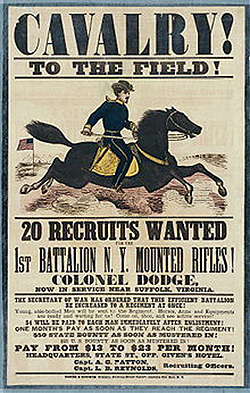
Please send all Checks and Money orders to :
Dave Taylor P.O. Box 87 Sylvania, OH 43560
419-842-1863
Click Here to E-mail Us!
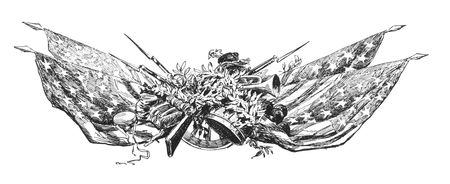

18-12-02
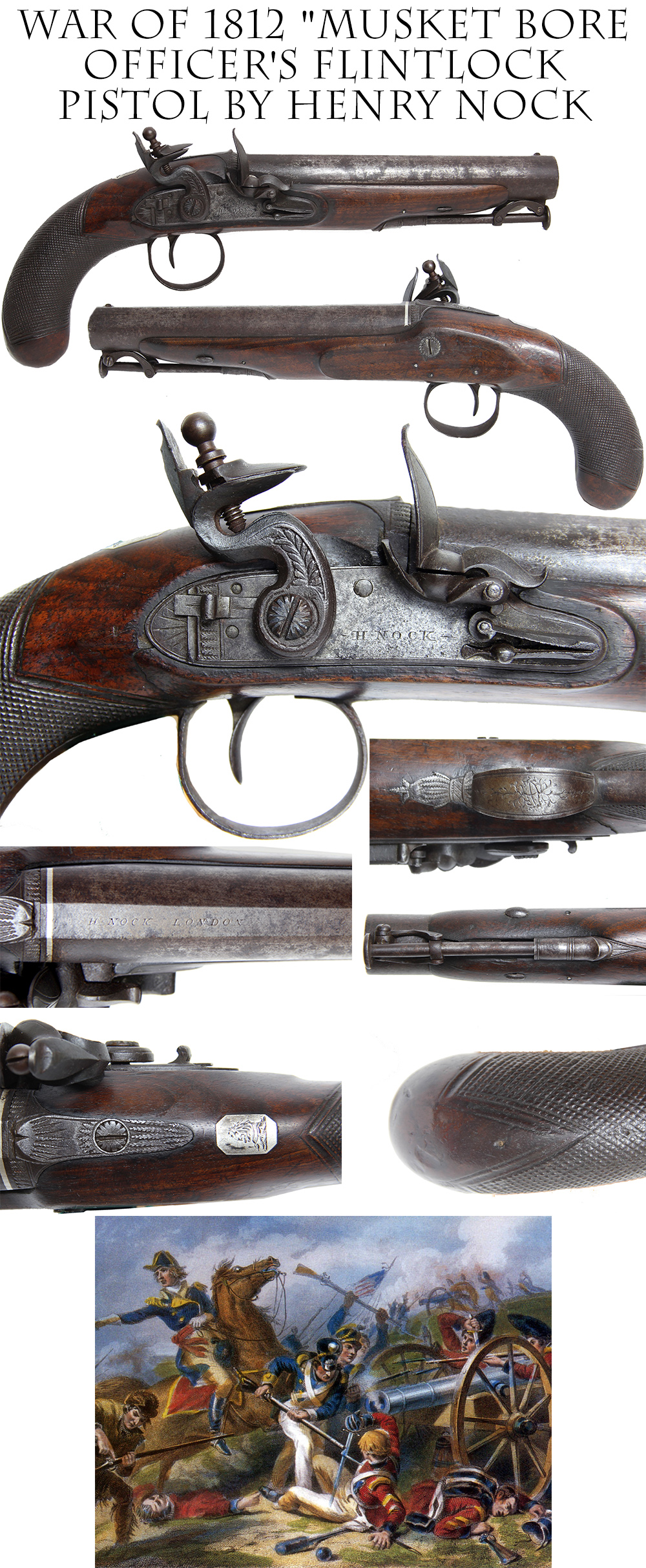
WAR OF 1812 “MUSKET BORE” OFFICER’S FLINTLOCK PISTOL BY HENRY NOCK: A fine “original flint” man stopper in wonderful condition. This large bore weapon is significant because it is a “Musket Bore” pistol, which means it is .75 caliber and capable of accepting the standard musket ammunition issued to British Infantry of the 18th and early 19th centuries. The .75 caliber is far larger than standard pistol bores. The only men who would need something this big are those on the field of battle with hundreds of other men equipped only with .75 caliber ammunition. If you exhaust your pistol balls… the cartridge box of that fallen soldier next to you will replenish your supply. Logical and simple. 7.25 inch barrel is nicely signed “H. Nock London”. The engraved lock is also signed “H. Nock”. Overall length is just under 13 inches. The steel furniture is all beautifully hand engraved. The wrist is inlaid with a small silver shield beautifully engraved with a roaring lion’s head. The butt stock is nicely checkered. The original steel captured ramrod still rests under the barrel. Beautiful uncleaned age patina overall. I have given this a good “going over” and as far as I can tell it is all original except for the top jaw on the hammer and the jaw-screw… which is pretty standard on these 200+ year old flintlocks. Those two parts are frequently broken or missing. The current jaw and screw are excellent replaced restorations that would elude most collectors. Otherwise 100% original and untouched and beautiful. There is an ancient stress crack (very stable) in the wood from the right of the trigger to the rear of the lock… visible only from the underside and it has been there for well over a century. Very high quality with a gold inlaid band at the breech and a platinum blow-out plug at the touch hole. A truly beautiful piece of deadly military art from 200+ years ago… $1,650.00 sold
Call us @ 419-842-1863

18-12-22: JAMES FICKEL WOUNDED IN ACTION 2nd IOWA CAVALRY EFFECTS: I personally purchased this set at the family estate auction of the descendant of Lieuteant Fickel, standing in the driveway of the family home in central Ohio as the auctioneer barked his calls. I have included the advertisement for the auction with this set. It consists of Fickel’s import officer’s sword, his sash, wallet, bible and photographs preserved by his family. His regiment served a full four years and saw plenty of active service, including on Grierson’s Raid, and lost 1 officer and 59 men killed and mortally wounded, which is a great many for a cavalry outfit. One of the best things in this group are the family notes accompanying them: ie: A small wooden box has GAR stuff and a note reading “For Jimmie, All of the things in this box were Great grandpa-James Fickels treasures which he kept in this box. When he got old he looked at them every day. He was a 1st Lieutenant in Co. K 2nd Iowa Cavalry in the Civil War.” That’s a pretty telling picture of an aged vet looking at mementoes of his long vanished youth.
The sword is great example of the “Peterson-75,” so called because of its illustration number assigned in Harold Peterson’s landmark book…. The American Sword. This was a very popular pattern of import saber based on the British 1822 pattern, and made in a number of variants by German makers for import to the U.S. during the war. The sturdy steel hilt and scabbard made it a favorite sidearm for officer’s expecting heavy service in the field. (I once owned Phil Sheridan’s Peterson 75.) This has a cut-out spread-winged American eagle with an E Pluribus Unum ribband over head (and the words awkwardly divided,) as well as a cut-out US below, worked into the counterguard. The gray sharkskin wrap and binding wire are complete and tight with just minor wear.
The blade is bright, mixed with just a light bit of gray here and there, and still shows nice, visible etching- many of these had plain blades. This one includes a spreadwinged eagle and ribband on one side and a US on the other, each amid floral scrolls. The edge and point are very good. The W. Walscheid/ Solingen stamp is crisp at the ricasso. On the opposite side the small sunken round stamp reading “Proved” is partially visible, the thin brass piece pressed in over it having popped out long ago.
Fickel’s crimson silk officer’s sash is also still with the group and shows good color. One end knot shows a tad lighter than the other and is missing a couple turns of cording just below the turkshead, but both knots are solid and have their fringe complete.
Fickel’s 1861 bible is present, with a period brown ink date, “May 1st 1864” on the flyleaf and his name in later pen below that, the shakiness of the name making it clear he added it as an old man. Given the date, it is certain he acquired it while home of furlough as a re-enlisted veteran, perhaps as a parting gift on his return to the army in the field. Also present is a wonderful family tag about the Bible.
A signed CDV of Lt. Fickel is with the group, as is a signed CDV of his wife. Both are backmarked by a Lancaster Ohio photographer. He is shown in a vignetted mid-chest up view wearing his officer’s frock coat with his lieutenant’s straps showing. She is portrayed in a full-standing view. Along with these are three 1870s era CDVs of their son, Samuel Jackson Fickel.
Fickel enlisted at Morning Sun, Iowa, at age 23 as a private on 8/19/61, and mustered into Co. K of the 2nd Iowa Cavalry on 8/19/61. He was promoted to First Sergeant 4/1/62. He was wounded in action 12/5/62 at Coffeeville or Oxford, Mississippi. This was during operations along the Mississippi Centeral Railroad when the cavalry division of the 13th Army Corps was briefly forced back by a rearguard of Confederate infantry and artillery. Fickel re-enlisted on 3/1/64, and was commissioned First Lieutenant 5/4/64. He served with the unit until muster out on 9/19/65 at Selma, Alabama. Fickel was born in Ohio in 1838 and returned there after the war, dying in 1912 at Canal Winchester.
The 2nd Iowa cavalry served from August 1861 to September 1865, a full four years in the field, with the Army of the Mississippi, District and Army of West Tennessee, Department of the Tennessee, and lastly in the Military Division of the Mississippi. CWData lists 81 data points where they were engaged and suffered some sort of loss in fights in Mississippi, Alabama, and Tennessee! They were early on engaged at New Madrid and Island No. 10, the siege and Battle of Corinth and the Battle of Iuka, as well as a cavalry charge at Farmington. It was active in Grant’s operations against Vicksburg, “riding all over northern Mississippi in little expeditions and scouts,” until April 1863, when it took part in Grierson’s Raid, perhaps the most successful cavalry expedition of the war. In 1864 re-enlisted veterans went home on furlough in April and returned in time to spend the summer and rest of the year in raiding and scouting, and then fighting Hood’s invasion of Tennessee, fighting at Franklin and at Nashville, where it dismounted and fought as infantry as part of Hatch’s division. This is as nice an intact set as I have seen turn up at a family auction in a long long time. Fickle also brought home a relic Confederate staff officer’s sword by Frolich. I fought hard for it, even bid fifteen hundred dollars more than I had set as my bid limit, but when the smoke cleared I was the under bidder. I did get all the Yankee stuff. $2,350.00 sold
Call us @ 419-842-1863
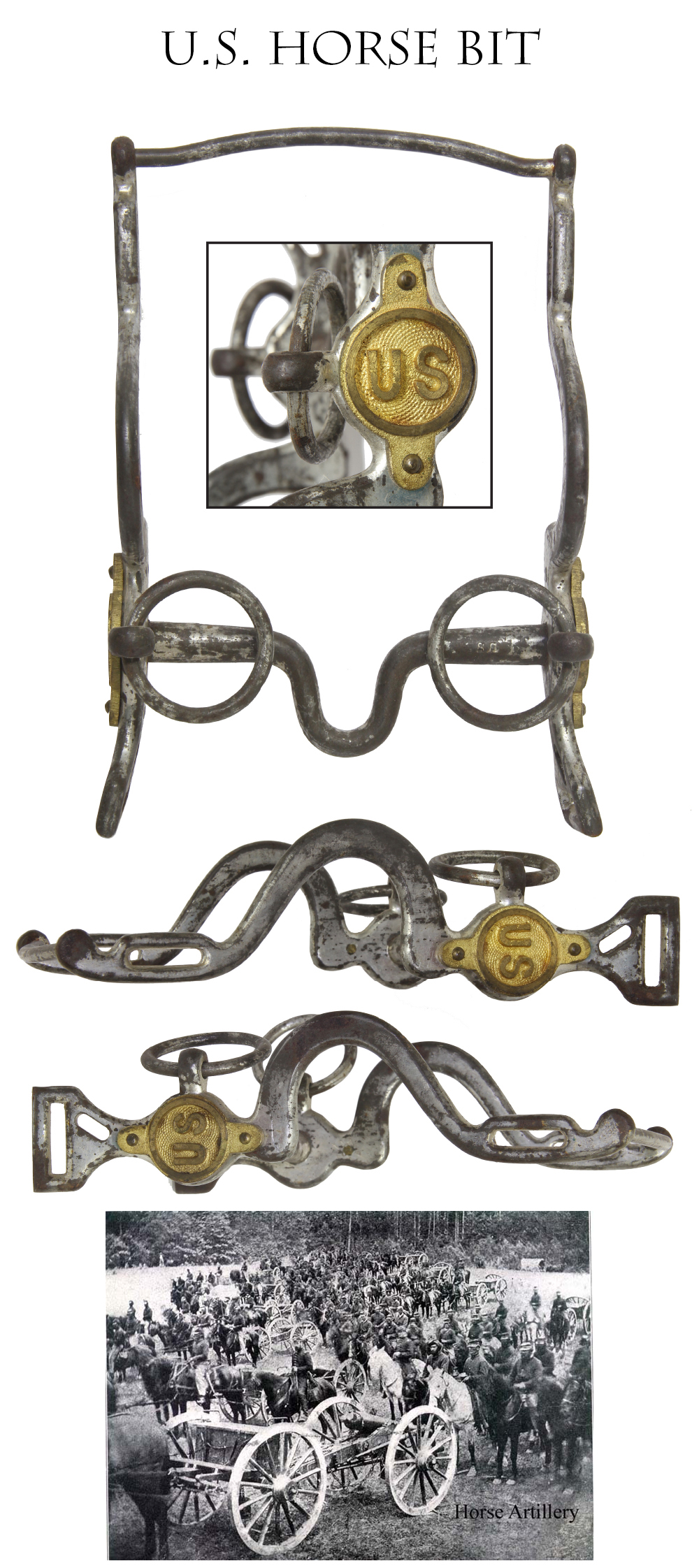
18-12-25… SUPERB CONDITION
1864 PATTERN TINNED IRON US ARTILLERY BIT:
A really great condition bit that shows lots of the original gilding on the US side bosses and lots of the original bright tinning on the iron. Field artillery required large numbers of horses for drawing guns and equipment, and the animals, like the crews, did their work under fire and took casualties. The army tried several different patterns of bits, and this is the pattern they settled on for horses in the six-horse teams drawing guns and caissons into action and Federal artillery often made the difference in battle. I can’t remember which Confederate general said it, but one of them proclaimed, “give me Confederate infantry and Yankee artillery and I can whip the world. Top notch condition and no reason you can’t display with cavalry gear. General Grant used an early pattern artillery bit at one point. The twin brother to this is shown as
sold
for $300 on my friends at The Horse Soldier site. Merry Christmas at $245.00 sold
Call us @ 419-842-1863
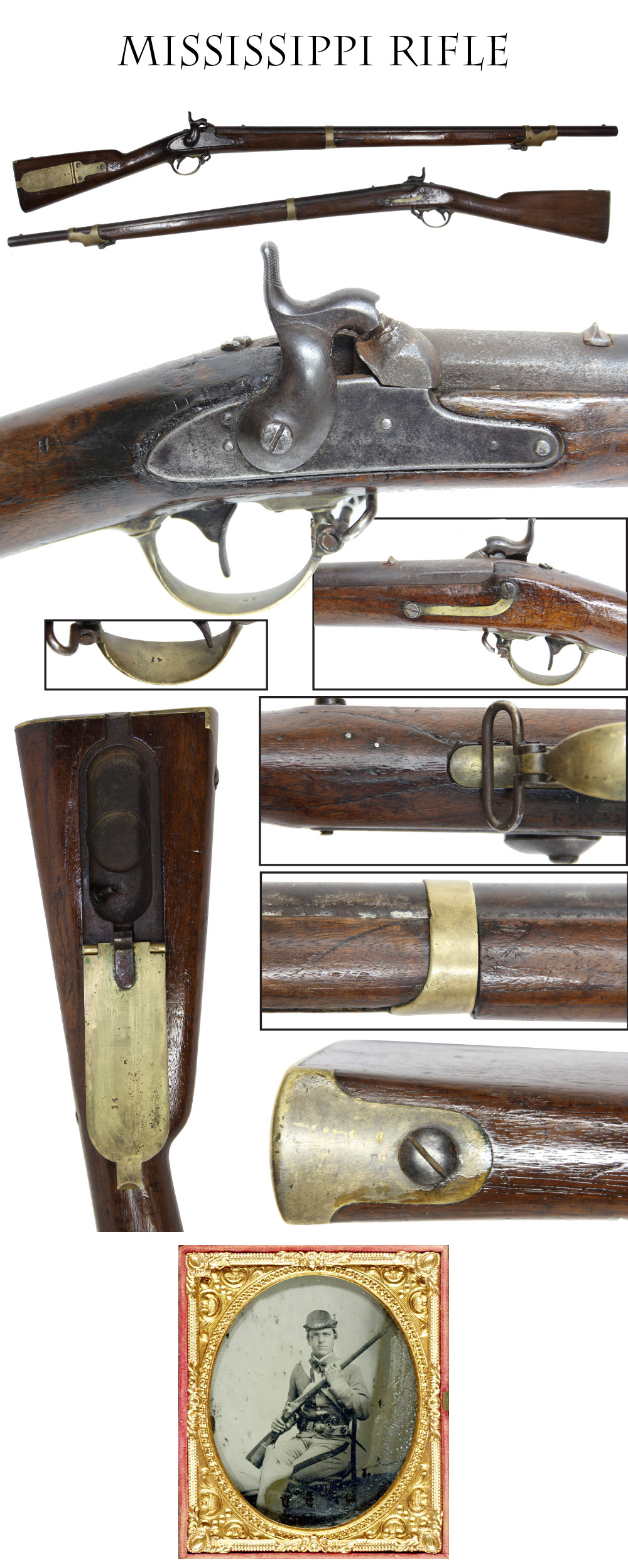
18-12-26
MEXICAN WAR DATED MISSISSIPPI RIFLE … Whitney was one of the few contractors to brave the government’s decision to contract these rifles out at fixed prices. He later remarked that he spent thirteen years making them on various contracts and never turned a profit. This an early date, 1845 Mexican War example from the second year of production under his first contract. The gun is a basic entry level wall hanger Mississippi. The lock markings are clear, with “N. Haven” and an 1845 date behind the hammer and his name forward of it with a US stamped underneath. The gun shows use, and is very displayable. The wood has handling dings overall, lots of dings on the left flat, and a later varnish or shellac finish overall. There is some wood filler around the back end of the lock and on the underside two old repaired cracks radiate forward from the triggerguard tang on either side of a chip that shows two nails. A couple of other cracks run from the forward edge of the lockplate. There is a sawed seam in the wood under the lower barrel band. I can’t tell if the forend is a gunsmith replacement, or if this is an old time mail order relic. Back in the early 20th century, shipping a gun could cost nearly as much as the old gun was worth. Consequently we FREQUENTLY see obsolete longarms that have had the stocks cut in half under a band so they could be shipped in a shorter more economical box. I am 90% sure this one was cut for shipping as the forend shows equal age and the nosecap is present. WW-2 collectors are very familiar with the practice of cutting down rifle stocks for ease in transport. With Mauser rifles the term “duffle cut” is part of the collector lexicon. It means the stock was sawed in the middle for transport home in a duffle bag. The wood overall is solid and stable. There is a chunk burned out behind the nipple and bolster. The barrel has moderate pitting around the breech and bolster, and the rear sight is homemade replacement. The bore has been reamed out smooth. The lock and hammer are smooth and show the mottled gray-blue of old case color. The brass shows a nice medium age patina matching on all parts. The patch box and triggerguard each show sub assembly or inspection numbers: “1” and a “4,” which read as 14 on the box door and 41 inside the triggerguard. Patch box is very good and the spare nipple is still in place. Swivels are present, but there is no ramrod. For all its roughness, this is a scarce early date for a Mississippi and about as affordable as you are going to find. $850.00 sold
Call us @ 419-842-1863

18-12-27…
JAMES WARNER .32 CALIBER POCKET REVOLVER:
Warner had hard luck in losing patent infringement lawsuits on his percussion and cartridge arms. This is one of his five-shot .32 rimfire pocket pistols with bored-through chambers… an infringement on Rollin White’s patent. The cylinder pin doubles as an ejector and a loading gate on the right closes off a deep loading channel. The Warner’s Patent marking is visible on the cylinder and does not have the additional 1855 patent stamp. Mostly plum brown patina with a mix of thin brown gray. Serial number 564 is visible on the butt strap, putting it midway in an estimated production run of about 1,000 guns in the late 1860s. Minor dings to the cylinder. Grips show some shrinkage away from the frame at upper right and have a replaced screw. Aside from the screw everything else is original. The mechanics are good on this pocket revolver and it displays great with Wild West gambler items. $765.00 sold
Call us @ 419-842-1863

18-12-26… ALLEN & WHEELOCK SIDEHMAMMER .32 CALIBER REVOLVER SHORTENED TO 3 INCH BARREL …
The company turned out about 1,500 of these handy rimfire revolvers from 1858-1865 in at least eight variations. This one is numbered 227 on the barrel and cylinder. The two-line Wheelock patent stamp on the barrel flat is truncated indicating the barrel was shortened during its period of use and the long brass blade front sight installed, The July 3, 1860 patent date on the frame forward of the cylinder is partially visible, the section closest to the cylinder suffering from some firing corrosion. Mechanics are good. It cocks well. The cylinder advances when it feels like it. Front entry cylinder pin as is correct for the fourth and later types. Grips are good and tight to the metal, just some dings and divots on the butt. Some case color to the hammer. The frame and cylinder are gray mixed with dark gray and some brown spots. Some light pitting to the cylinder and on left of barrel and frame just forward of the cylinder. Here’s an end of year bargain for you…. d
$475.00
sold
Call us @ 419-842-1863
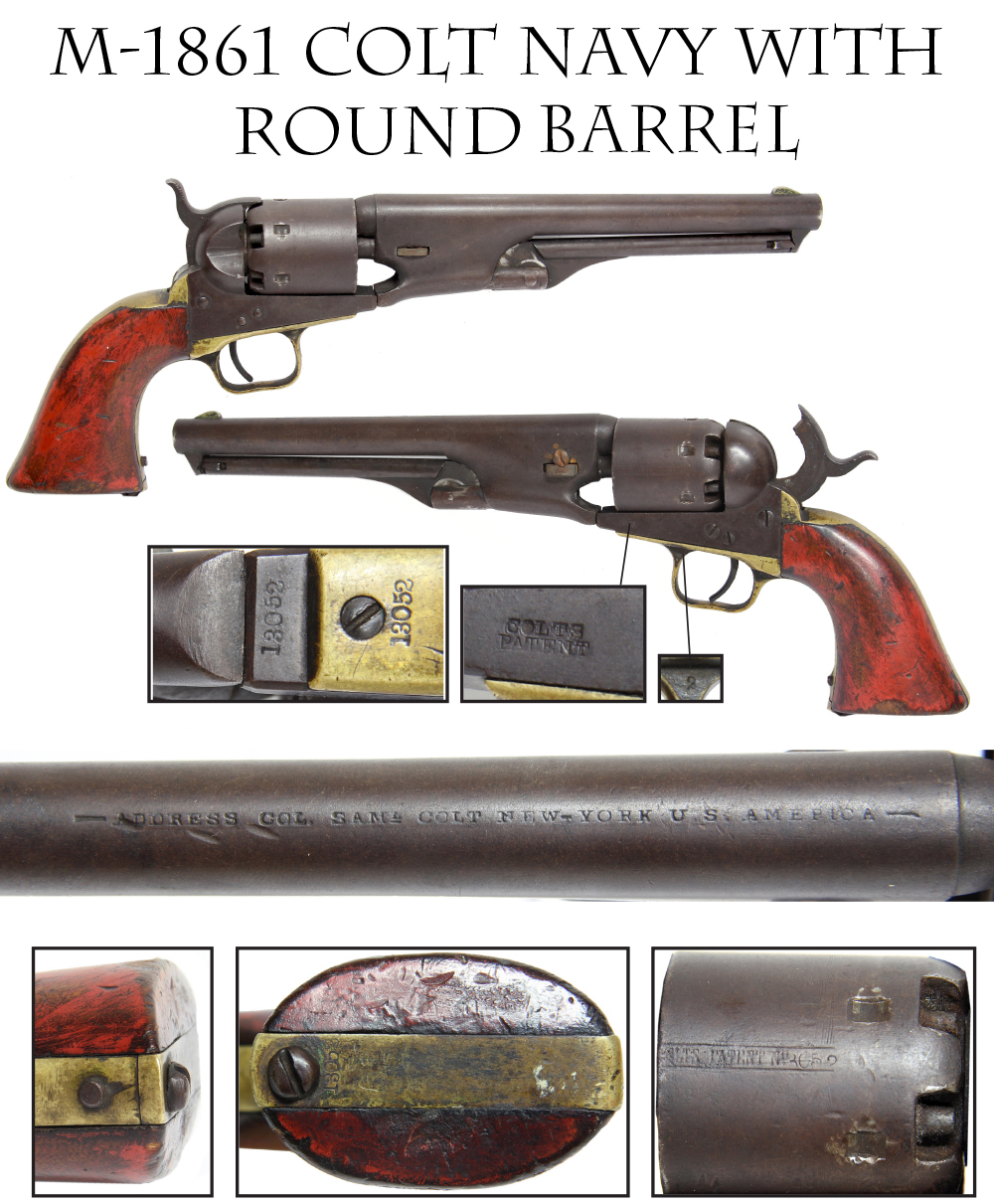
18-12-27…. CIVIL WAR COLT MODEL 1861 NAVY…
Manufactured from 1861 to 1873, this model was introduced just prior to the war while Colt was still actively producing the octagon barrel 1851 models. Both models were produced concurrently from the Civil War through end of production. This one is numbered 13052, giving it an 1863 date of manufacture (numbers approached 28,000 by the end of the war.) The metal is smooth overall with a uniform plum brown finish, medium patina to the brass, overall very honest. The grips were painted a reddish orange way back when and this color has worn through showing the original grain underneath. I am leaving it this way. The wood to metal fit is tight, with some minor chipping on the heel of the grip and some small dings on the butt. The barrel address is crisp, with just three small checks in the metal under the beginning of the line, affecting just the “AD” of “address.” The cylinder patent stamp is legible though a bit worn. The cylinder scene is very light, which is common on ’61 Navies. Mechanics are good. Frame stamps are clear. A small bit of light standing rust is present around the replaced wedge and wedge screw. Some bright metal comes through on either side of the rammer pivot where it has worn against the frame when actuated. The nipples are good, with no battering. Butt strap screw is an OLD replacement using a rounded head screw. Aside from wedge and two screws… all original. A very affordable example of a Colt ’61 round barrel navy.
$1,150.00.
sold
Call us @ 419-842-1863
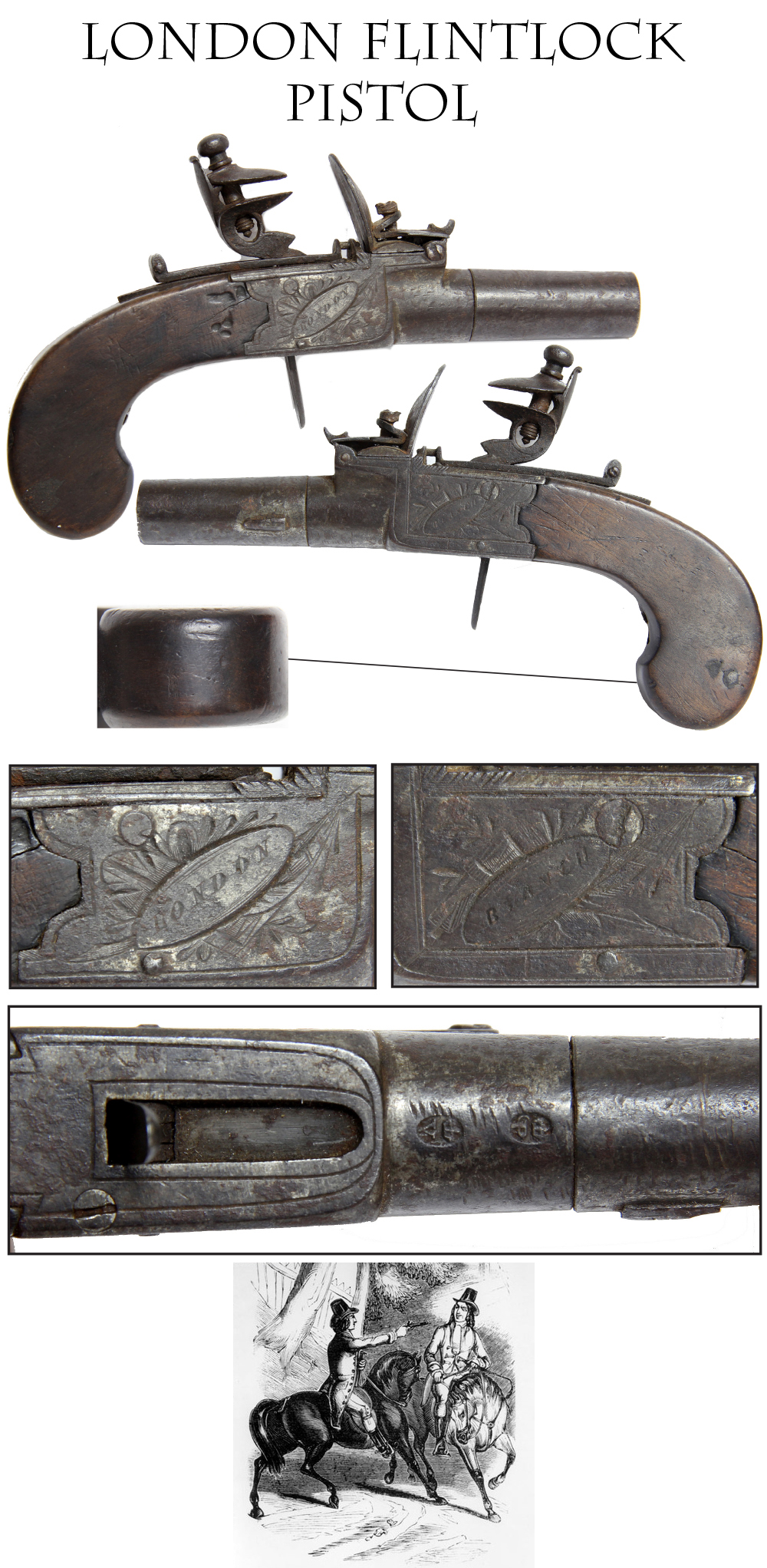
18-12-28. LONDON MARKED SCREW BARREL POCKET OR MUFF PISTOL:
These small turn-off barrel pistols were the derringers of their day. Easily concealed and carried in a pocket, or muff, they also provided a back-up weapon in a close fight, as Stephen Decatur testified. Provided with a fairly large bore, the screw-on barrel was even more important in that it allowed for a very tight fitting ball. This one has a less than 3 inch barrel, the underside of which shows a worn lug that was used with a barrel wrench to tighten or remove the barrel. The underside of the barrel shows two proof marks. The hammer is center hung (box lock) and there is a top mounted sliding safety, which along with the flat grips and reinforced hammer suggest a date in the 1820s. The frame is decorated with floral scrollwork and an oval cartouche on one side with “London” in the middle, and on the other with some cursory martial motif and the maker or dealer name “Branch” in the oval panel. The grips fit tightly with very little shrinkage and a few divots on the upper right. The best part in some ways is the folding trigger on this pistol, which along with the safety shows it is intended to be carried loaded in a pocket. 200 years old and still with us.
$575.00
Call us @ 419-842-1863
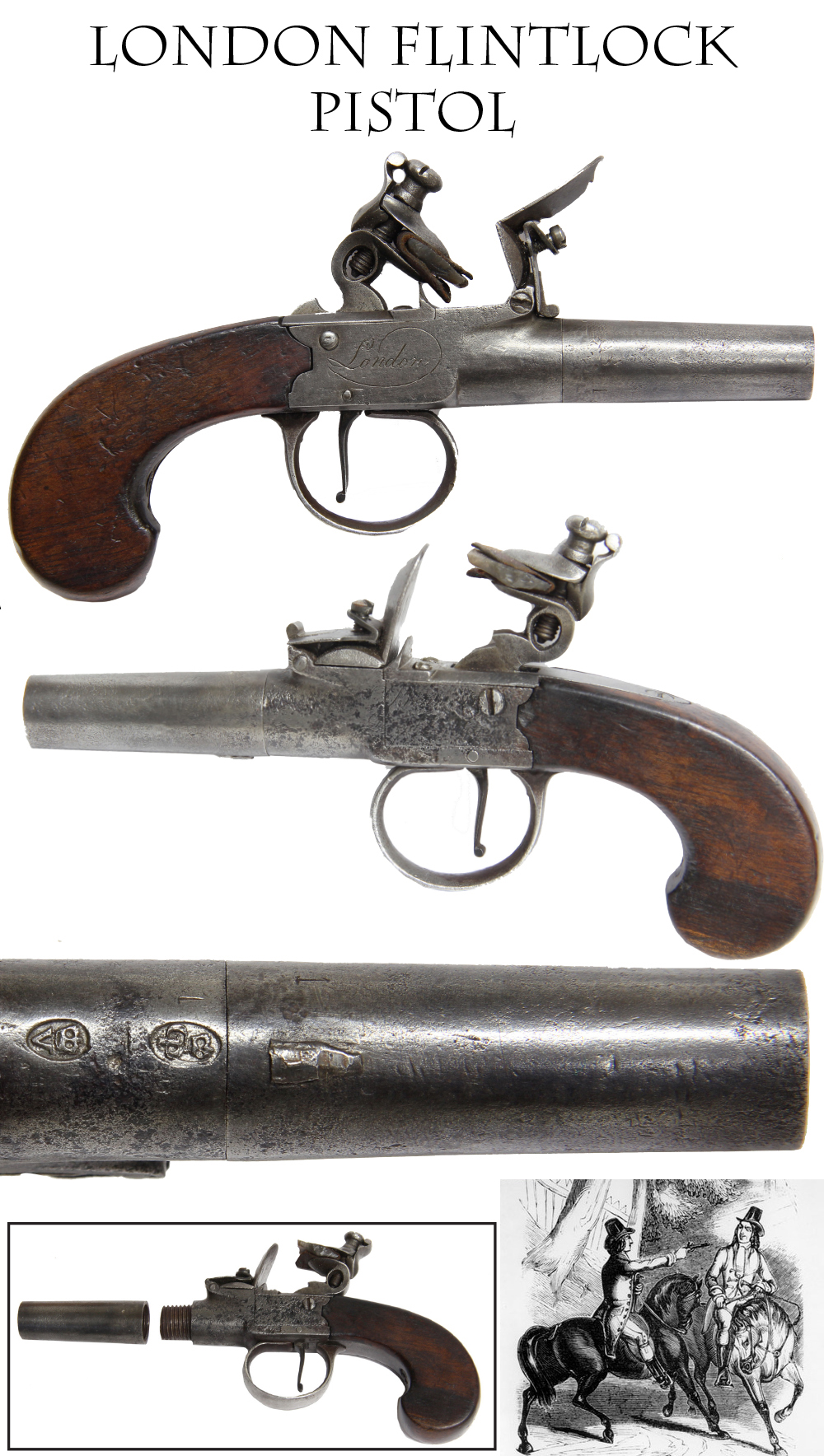
18-12-29. .LONDON FLINTLOCK MUFF PISTOL …
Here is an even simpler version of the turn-off pocket pistol. This is provided with a conventional trigger, though guarded with a large triggerguard to avoid accidents in getting it out of ones pocket. Barrel lug is present, though as usual, worn. The two proof marks are visible on the underside of the barrel. The mechanism is functional the grips are plain and flat sided. Metal was cleaned some time ago. Barrel is smooth. Right side of frame shows some light pitting along the edge of the flash pan, but a clear London address on the right of the frame in a simple loop/flourish. The left side of the frame shows heavier pitting that obscures the script maker or retailer name. The wood is good, with just a few light dings and handling marks, one check on the forward left side, and narrow shrinkage gaps. A good example of the gentlemans overcoat or pocket pistol, though as mentioned with other examples of this gun, there is a reference to Stephen Decatur drawing a small pistol from his pocket to shoot an assailant during a naval boarding action.
$575.00
Call us @ 419-842-1863
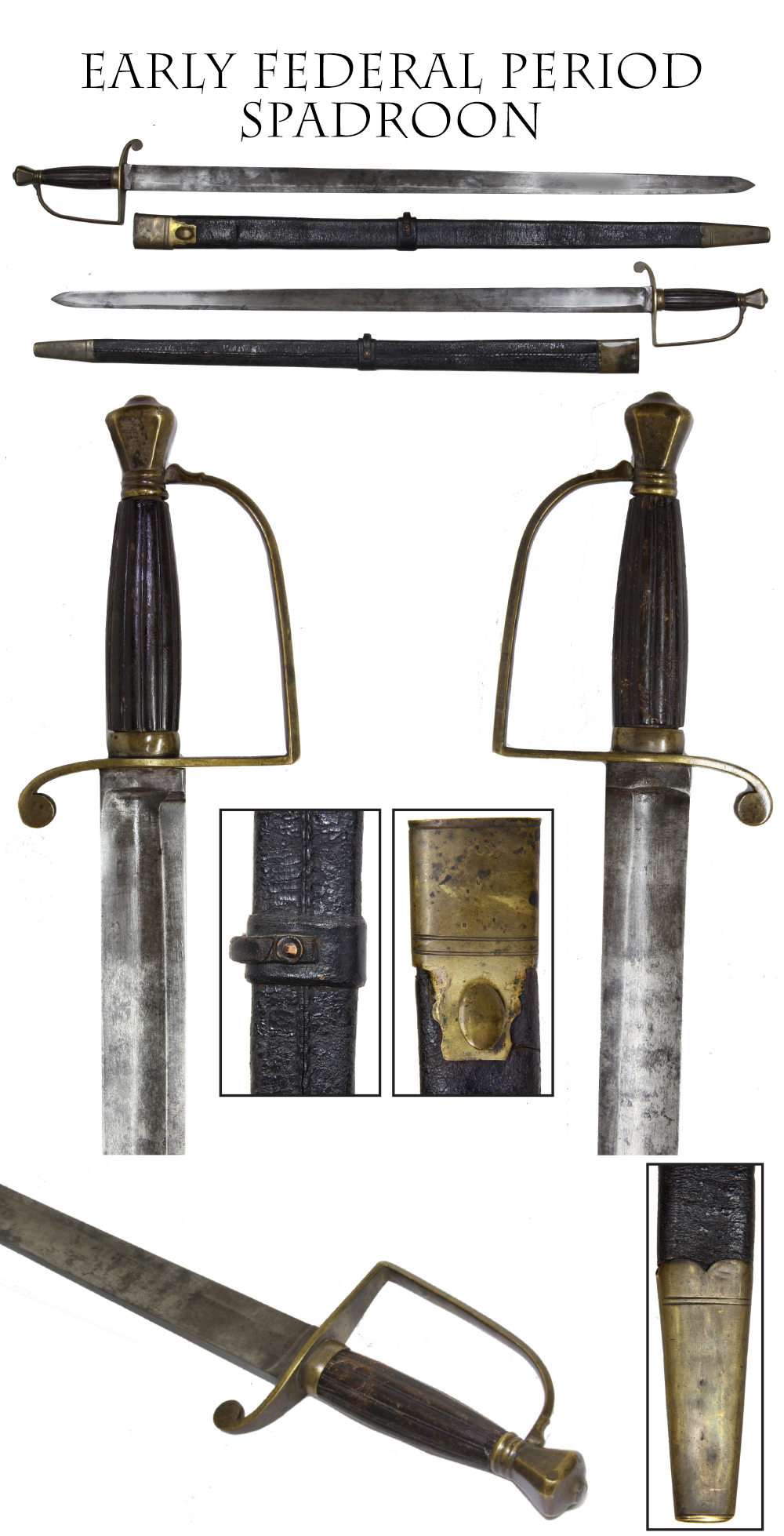
18-12-30…EARLY FEDERAL PERIOD SPADROON…
A nice example of an early Federal period American sword. These stirrup hilt straight bladed swords went out of fashion around 1800 in favor of sabers. This one shows early traits for the type: the wide blade and a scabbard set up originally for a shoulder belt in particular. Very good condition facetted pommel and dark grip with a slight swell and straight reeding. Just a tad of age shrinkage. Nice aged patina to the facetted pommel, simple guard and ferrule. The blade has a good edge and tip, a medium width ricasso, and no evidence of any blade engraving or etching. The metal is smooth, with no edge nicks or chips, and shows well with a steel gray overall tone with darker gray cloudy areas. The scabbard is black leather and solid. The upper brass mount has a fastening stud for the frog of a shoulder belt and was then modified by the addition of a leather band midway down that has a riveted loop attached to it. This pretty clearly seems an addition made so that it could be carried on a waist belt with sword slings and that there might have been a similar piece, now missing, added near the top mount. This is a very simple, but classy sword form, very fitting for the taste of the new republic.
$750.00
. sold
Call us @ 419-842-1863

18-12-31… BRITISH MODEL 1742 HANGER SWORD:
Until the Royal Warrant of 1768 all British infantry were supposed to carry short swords, or “hangers,” as well as the musket and bayonet. Even after that date they were still carried by sergeants, musicians and all grenadiers. Patterns varied by regiment, but enough of this style appear in period prints to give it the designation among collectors as the, “Model 1742.” This one has the typical brass hilt with heart-shaped counterguard, quillon and knuckleguard with no branches, and 28 inch slightly curved blade. It is identical to the example pictured in Warren Moore’s Weapons of the American Revolution as Plate E-64 on page 159. Both his and ours have a single narrow fuller running down the upper edge of the blade and have a globular pommel with tall capstan and thick quillon. The scabbards are the same as well, both being black leather with a throat mount carrying a fastening stud just under some incised lines. Ours still has its matching drag, albeit with cracks and some missing pieces on its top edge. There are minor differences in the number of incised lines on the upper mount and the slightly fancier stud on ours. Ours also shows a very clear CROWN/2 inspector stamp on the blade, which is not noted on Moore’s, but pretty clearly indicates it is British and not one of the similar German hangers. The blade is very good, steel gray in color with an overall dusting of darker gray spots. Has a strong edge and point. The brass hilt has an even mellow, aged patina. The grip, like Moore’s, is plain wood. The swords turn up readily enough but not so with the complete brass mounted leather scabbards. Complete…
$1,150.00
sold
Call us @ 419-842-1863

18-12-32…1864 DRAFT POSTER FROM COXSACKIE…
The document is 12 inches long and 9.5 inches wide. It contains aproximately 160 names that were drawn on September 9th 1864 to be drafted from the town of Coxsackie. On the back side of the document in the lower right side of it is a personal note that reads ” I thought you woild like to see who was drafted we are all well.” An interesting document at a fair price…
$289.00
sold
Call us @ 419-842-1863
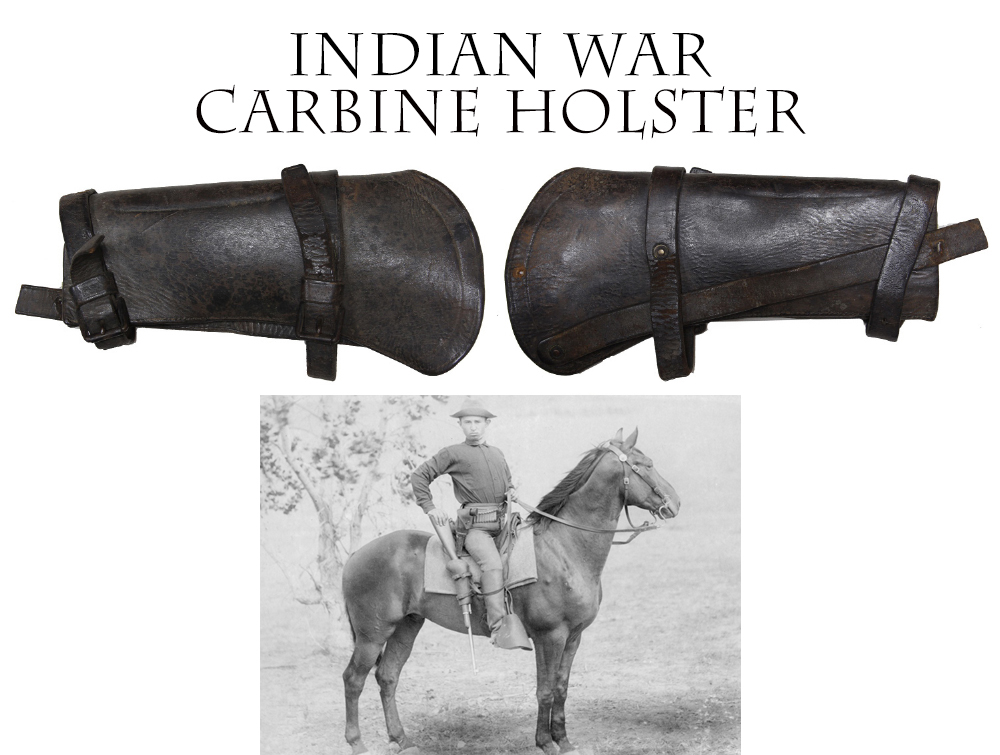
18-12-33…INDIAN WAR CARBINE BOOT .. INDIAN WAR CARBINE BOOT
…US Cavalry 1885 Pattern carbine boot. This pattern replaced the old Civil War carbine thimble. It had the major advantage of taking much of the weight of the carbine off the troopers shoulder sling. This particular pattern was short-lived, however, and an 1886 version introduced that better accommodated the 1884 pattern .45-70 carbine with the Buffington pattern rear sight. This one is in solid shape, with good finish to the leather and all three straps in place. There is a four inch separation on the seam stitching of the boot, and the leather is quite hard from long storage. It would take some doing to get a carbine inside it today. Great display piece
$139.00
sold
Call us @ 419-842-1863
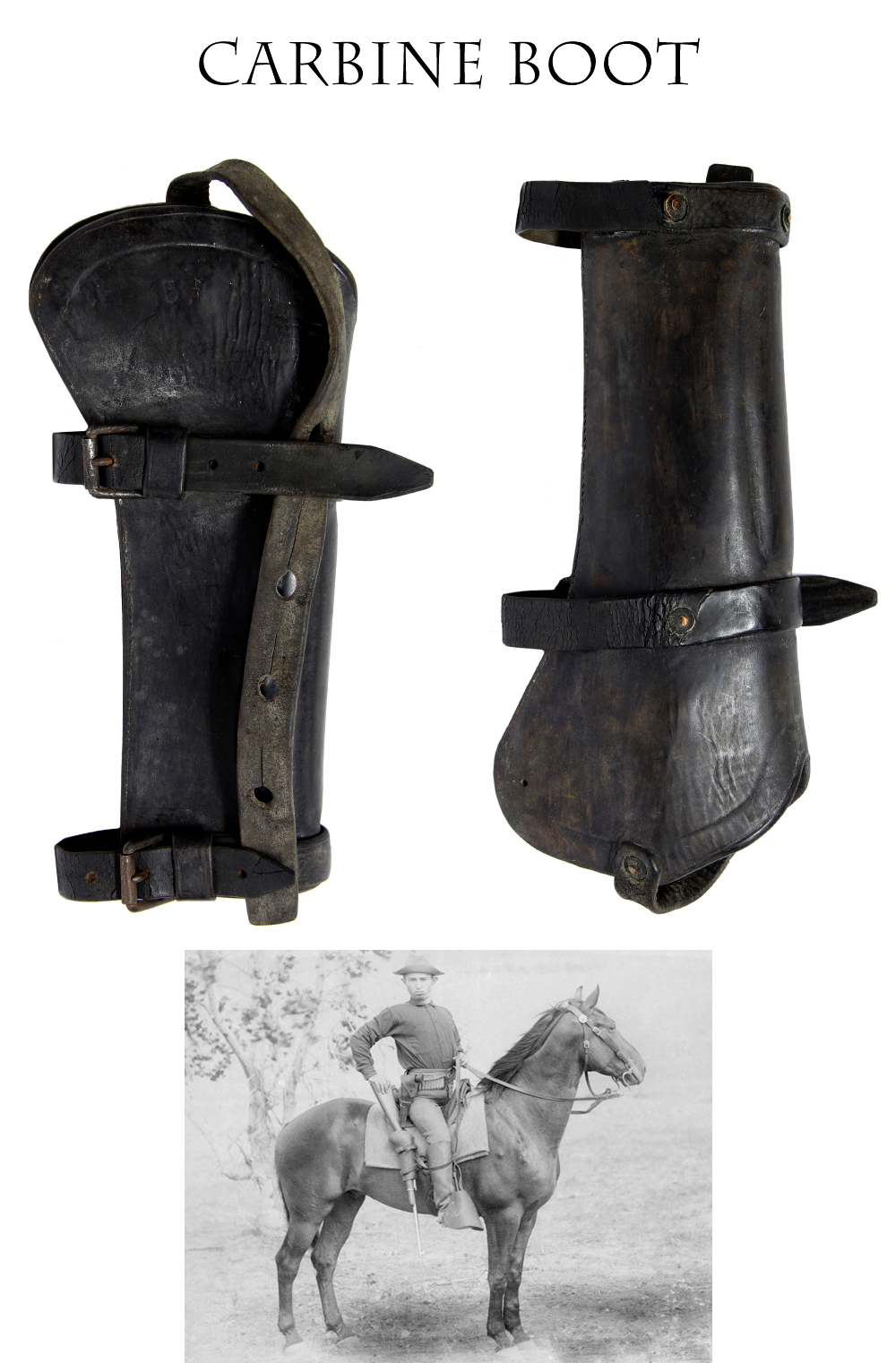
18-12-34… INDIAN FIGHTERS CARBINE BOOT:
1885 Pattern US cavalry carbine boot. A nice example of the Indian War carbine boot developed for the 1877 carbine and its various sight configurations. This was the first of the US cavalry boots to take the weight of the carbine rather than merely keep it from flopping around while the trooper bore it by the carbine sling. The pattern was short lived because of the introduction of the Buffington rear sight on the 1884 carbine and the 1886 version had a brass reinforcement on the forward edge of the boot mouth. A very good example showing the development of cavalry accoutrements. The lower strap has been repaired near the rivet. Stiff with age but a great display item priced low
$145.00
sold
Call us @ 419-842-1863
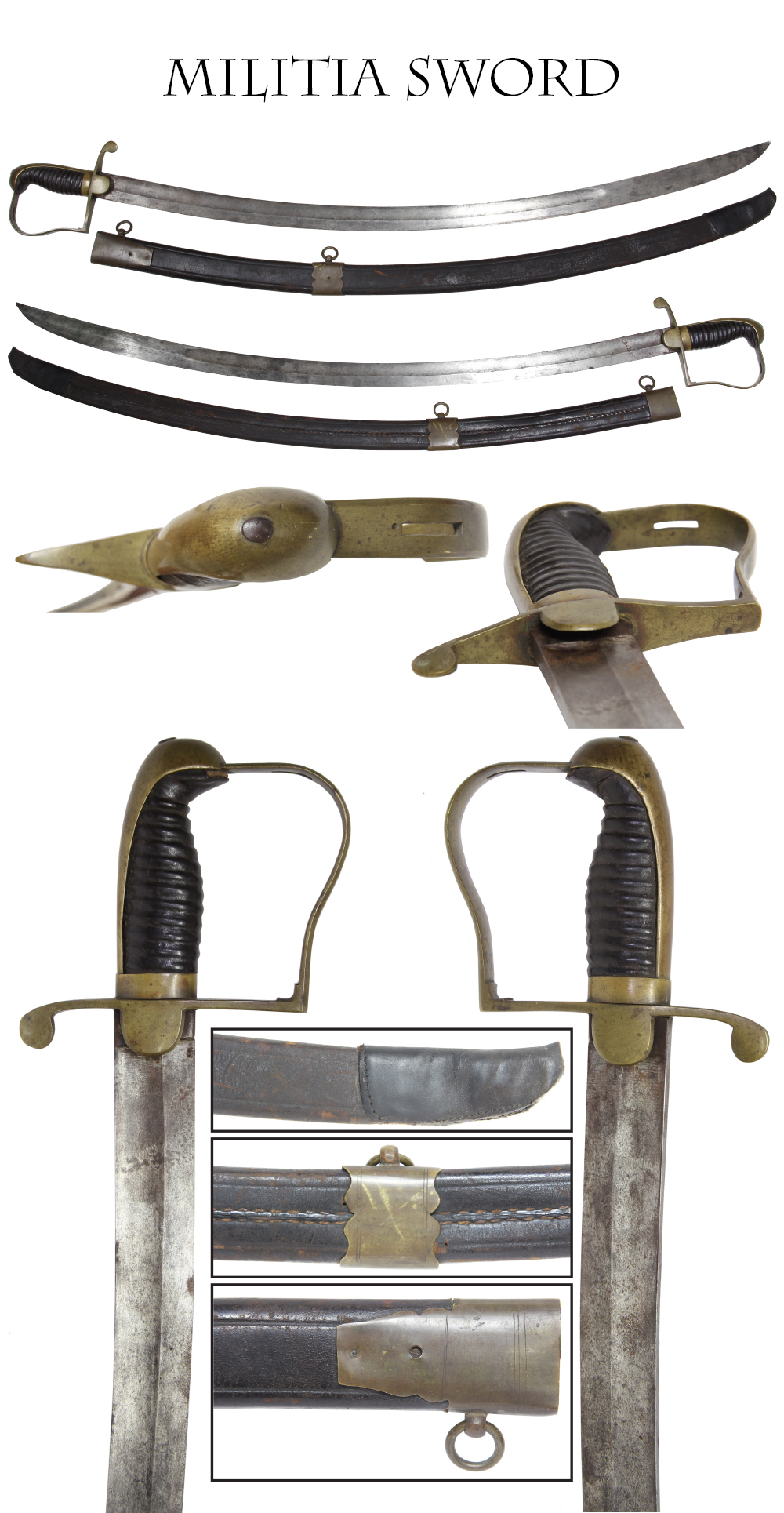
18-12-35… MILITIA HORSEMAN’S SABER ..
American militia cavalry saber modeled on the British 1796 light cavalry saber. Brass hilt with a reverse-P guard, fairly high quillon, with backstrap, ferrule and short rounded langets. The grip is a thin black leather that shows just the slightest bit of chipping under the tip of the pommel. Missing the binding wire, but the wrap is tight. Blade is smooth metal, steel gray with a overall dusting of brown that would likely clean up if you were so inclined. The blade has a single wide fuller, good edge with no nicks, and good point. The scabbard is full-length, black leather with brass middle and upper mounts, both with carrying rings in place, the upper mount also showing a small hole for a missing button so the saber could be carried in a cross belt frog as well as on saber slings. The scabbard is solid and in very good condition. The brass drag was long ago lost and replaced by stitching a piece of leather over the tip. This does not look terribly old to me and I would keep an eye out for a loose drag to restore it at some point. The brass mounts and hilt have a nice, mellow, aged patina and the blade tang is smooth on the pommel and not messed with. Although this pattern was used by American militia up to about 1840, the leather scabbard and contoured grip strike me as earlier, perhaps more in the 1800-1820 era. We tried this last week at $595 without luck… How about
$495.00
sold
Call us @ 419-842-1863
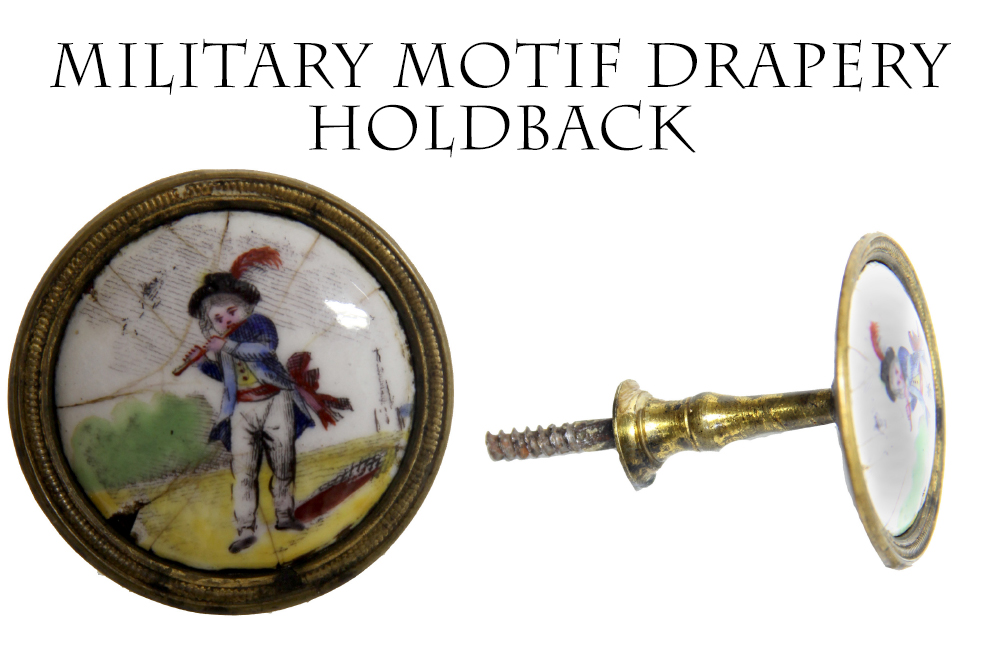
18-12-36 …. 200 YEAR OLD MILITARY MOTIF DRAPERY HOLDBACK:
Really charming porcelain and brass drapery “holdback” decorated with child military fifer in color on porcelain. Holdbacks were mounted (screwed) into the wall beside the windows of your parlor to hold your drapery back from the window. Circular artwork is about the size of a silver dollar. Dates first quarter 19th century. Very good overall with just expected age. I tried this last week at $65 with no takers… How about you let me make ten bucks ? Heck, I spent more than that paying my helpers to photograph it and upload it last week. $45.00
sold
Call us @ 419-842-1863
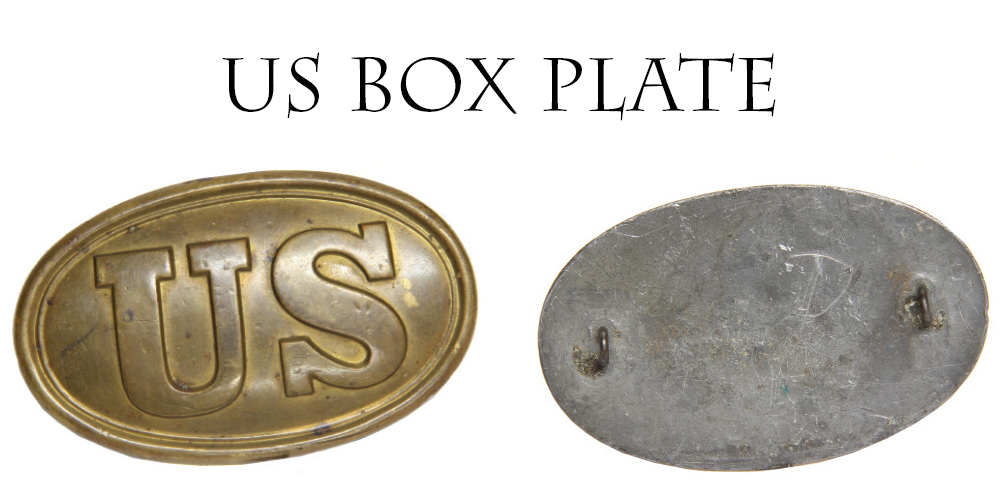
18-12-37…A regulation issue 1839 pattern cartridge box plate….
The standard issue plate of the Civil War. Very attractive, showing some gilt finish left in the low areas, a few tiny dark spots, and no dings or dents. Very smooth, clean lead solder back with both loops in place. These were made by a number of suppliers and the die-strikes vary somewhat, making them a sub-category of US military plate collecting. A very nice example.
$189.00
Call us @ 419-842-1863
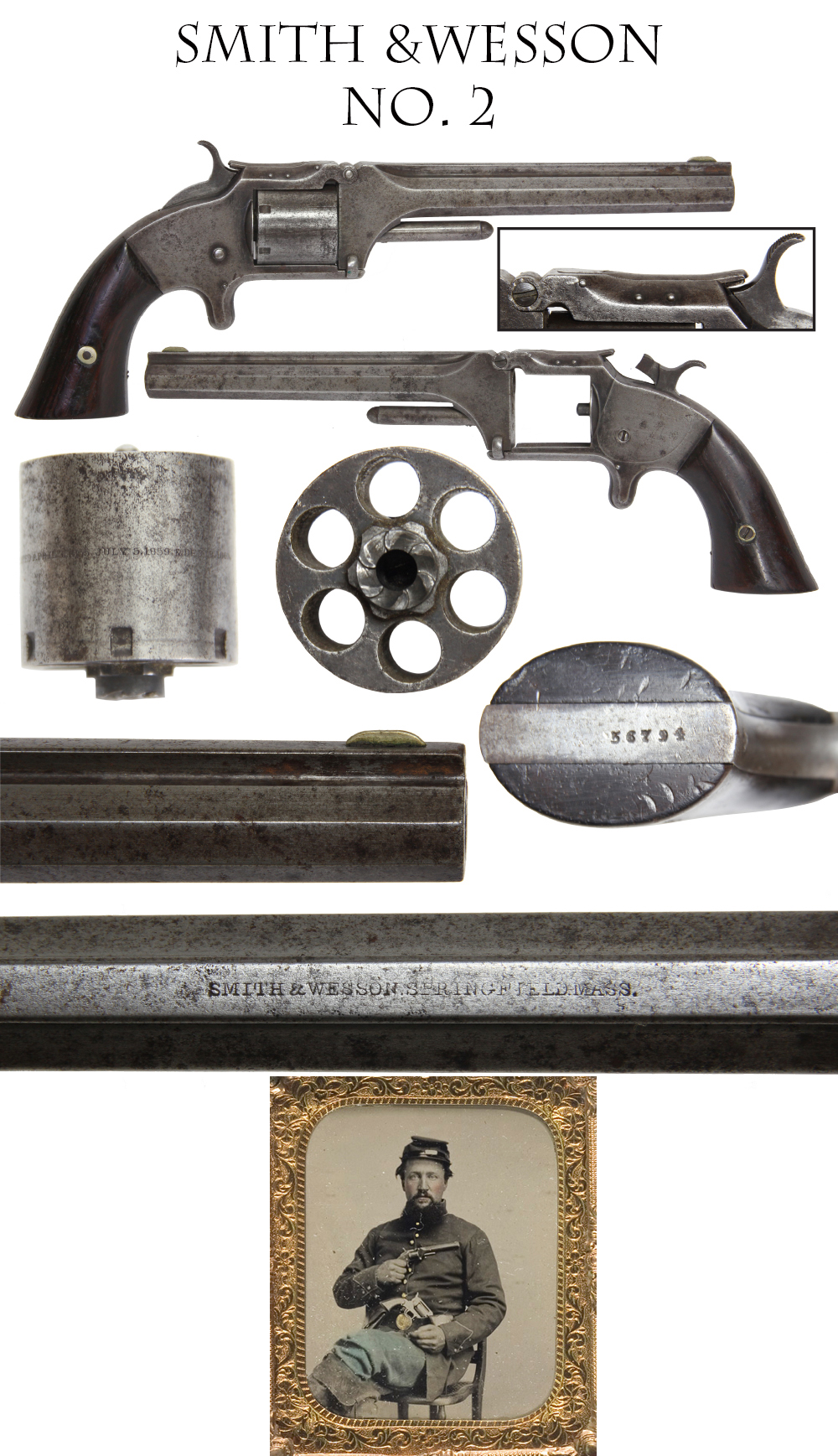
18-12-38…Smith and Wesson No. 2 Army Revolver:
Standard 6 inch Barrel is marked SMITH & WESSON. SPRINGFIELD, MASS. Cylinder is marked APRIL 3 1855, JULY 5 1859, DEC 18, 1860 32 rimfire caliber… Serial Number 56,794 (late 1860s). 100% Complete and mechanically perfect. Overall VG condition showing a good bit of wear but no abuse. 100% original and complete. Mechanically perfect. I offered it last week at 595 which I thought was pretty fair. Ok how about
$495.00 !
sold
Call us @ 419-842-1863

18-12-41… MASSACHUSETTS MINUTE MAN MEDALS FOR THE FIFTH MASSACHUSETTS:
VETERANS OF FIRST BULL RUN The State of Massachusetts authorized medals for those rare first responders who had answered Lincolns first call for volunteer troops to serve three months in April 1861. No other soldiers were authorized to have these. The bronze suspension bar reads Massachusetts Minute Men 1861 and the medallion has the state seal on one side and on the other the dedication, “The commonwealth of Massachusetts to the members of the Massachusetts Militia who were mustered into the United States service in response to President Lincoln’s first call for troops-April 15, 1861.” The medals were then struck along the rim with the soldiers name and unit. Somewhere between 3,000 and 4,000 of these medals seem to have been made for those early war veterans. Two brothers from California discovered a cache of these medals jn the rafters of their late fathers house, which had previously been the residence of one of the commanders of the Fifth Massachusetts. When found, these medals were still in their original cardboard boxes, but the boxes had sustained significant water damage and the brothers elected to discard them. Oh well. The brothers kept a couple of the medals and I bought the remainder. I had to pay dearly to get them but felt the find was significant. Most of these were awarded to members of Company D of the 5 th Mass. and came from the town of Haverhill. The regiment entrained for Washington April 21, 1861, and mustered into Federal service there on May 1. In July it was part of Franklins Brigade of Heintzelmans Division and fought at Bull Run, losing 9 killed, 2 wounded, and 23 captured. It returned to Washington and then to Boston, where it mustered out July 31. Many of the veterans then went on to serve in other Massachusetts volunteer regiments. I can offer the medals awarded to the following members of the Fifth Massachusetts. Unless otherwise noted, they were serving in the regiment during the period of First Bull Run.
*2* LEONARD SAWYER Jr. MUS
Sawyer must have had some musical talent. He was a 25 year-old shoemaker in Haverhill when enlisted as a musician on 4/16/61 and mustered into Co. D on 5/1/61. He mustered out on 7/31/61. He then enlisted again on 2/26/62 in the 17th Massachusetts as Principle Musician, serving until his discharge for disability on 9/30/62. The 17th was a three-year outfit that took part in Burnside’s Coastal Expedition. During Sawyer’s time with the outfit, they did duty at New Bern as part of Foster’s Division and took part in small raids, scouting, foraging, and outpost duty, losing two killed at New Bern on 5/22/62….
$350.00
Call us @ 419-842-1863
*3* JOSHUA HATCH Jr.
Joshua Hatch, Jr. was a carpenter by profession and 27 years-old when he enlisted on 4/16/61 in Haverhill as a private and mustered into Co. D on 5/1/61. He served with the regiment all ninety days, including the period of Bull Run, mustering out 7/31/61. He then reenlisted in Co. G of the 50th Mass on 9/19/62 and served with them until mustering out with them 8/24/63. The nucleus of the regiment was the old 7th Mass, but Hatch’s service in the 5th must have been good training. He was made sergeant on 9/19/62 and 1st sergeant less than a month later, on 10/16/62. The regiment saw service in the deep south, being posted at Baton Rouge as part of the 19th Corps and taking part in the siege of Port Hudson, suffering light casualties in the first assault on the city. The regiment returned to Massachusetts for muster out in August. ….
$ 325.00
sold
Call us @ 419-842-1863
*4* GEORGE P. WYMAN
Wyman is not listed with any profession, but was 21 and a resident of Haverhill when he enlisted on 4/16/61 and mustered into Co. D of the 5th Mass on 5/1/61. He survived to muster out with the regiment on 7/31/61 in Boston.
$295.00
Call us @ 419-842-1863
*7*
ORRISON J. DODGE KILLED IN ACTION AT MALVERN HILL
Dodge was an expressman in Haverhill and 23 years-old on 4/16/61, when he enlisted as a private and mustered into Co. D of the 5th on 5/1/61. He mustered out with the regiment on 7/31/61. Like Thomas Salter he reenlisted in the 22nd Massachusetts, enlisting and mustering in to Co. K as a sergeant to date 10/5/61 and becoming First Sergeant on 5/1/62. Like Salter, he became a sacrifice for the country. Where Salter was killed in the first of the Seven Days Battles, Dodge was killed in the last, falling at Malvern Hill on 7/1/62, the last of the engagements of McClellan’s withdrawal down the Peninsula, which he called a strategic “Change of Base,” but most regarded as a simple retreat. KIA $
525.00
Call us @ 419-842-1863
*8* HENRY J. SMITH
Smith was a 23 year old resident of Haverhill when he enlisted as a private on 4/16/61 and mustered into Co. D on 5/1/61. He served with the regiment until muser out on 7/31/61 at Boston.
$295.00
Call us @ 419-842-1863
*9* LYMAN P. BROMLEY
Bromley was a hatter in Haverhill. He enlisted 4/16/61 as a private and mustered into Co. D on 5/1/61 and mustered out 7/31/61. He enlisted again in the 17th Mass, like Leonard Sawyer, mustering in to Co. G. on 8/13/62, with whom he served until being discharged for disability on 2/12/63. He then tried his luck again in 1864, mustering in to Co. G of the 4th Mass Cavalry, but never left the state, dying of disease in Haverhill on 3/16/64.
$325.00
Call us @ 419-842-1863
*11* HENRY H. PARMELEE DIED OF WOUNDS
Parmelee or Parmlee, was a married paper hanger in Haverhill. Standing 5 foot 5 inches, with brown hair and blue eyes, he enlisted in Co. D of the 5th Mass on 4/16/61 and mustered into Co. D on 5/1/61. He mustered out 7/31/61, and then reenlisted in Co. M of the 1st Mass. Heavy Artillery on 3/1/62 as corporal, making sergeant in October. The regiment spent its early service in and around Washington. In the Spring of 1864, however, it was one of the heavy artillery regiments pulled out of Washington by Grant to serve as infantry in the 2nd Army Corps in his overland campaign against Richmond. Parmelee survived the horrendous fighting at Spottsylvania, where the regiment lost at least 56 killed, the fighting at Cold Harbor, and the June 16, 1864 assault on Petersburg. His luck ran out on June 22, however, when he was one of 44 men in the regiment wounded 6/22/64 in further fighting and died of his wounds 7/2/64 at the US General Hospital in Philadelphia, according to the surgeons, “from exhaustion after gunshot wound.”
$495.00
Call us @ 419-842-1863
*13* THOMAS KEIF PRVT. D. 5th REG CONVICTED OF MURDER

Thomas Keif (or Kief) was a shoemaker, 19 years of age, when he enlisted in Haverhill on 4/16/61 and mustered in to Co. D on 5/1/61. He mustered out 7/31/61. He enlisted again in September, but thought better of walking, enrolling in Co. L of the 1st Mass Cavalry on 9/23/61 as a corporal. The regiment first saw service in early 1862 around Hilton Head, NC. Keif’s company was part of the regiment’s third battalion, which remained behind when the other two battalions went to Virginia and served independently at Beaufort, Hilton Head, Folly Island and Morris Island, as well at the expedition to St. John’s River, Florida. For a while designated the Independent Battalion Mass. Cavalry, they were redesignated the 4th Mass. Cavalry. Kief reenlisted as a veteran as of 1/1/64 and was with the battalion redesignated the 4th Mass Cavalry on 2/12/64. He was promoted sergeant 7/1/64, 1st Sergeant 3/13/65, 2nd Lieutenant on 4/6/65, and commissioned 1st Lieutenant 7/13/65, but not mustered. The regiment lost 4 officers and 22 enlisted men killed or mortally wounded during its service. It took part in various expeditions in South Carolina and Florida. Starting in May 1864 parts of the regiment started moving north to join the Army of the James, some becoming part of the 10th Corps and a few being detached to the 24th and 25th. Company L was one of three companies at the Headquarters of the Army of the James that were ordered to hold High Bridge over the Appomattox River. On April 6, 1865, numbering just 13 officers and 67 men, they were almost annihilated. 8 of the officers were killed or wounded, and Kief’s date of promotion to 2nd Lieutenant indicates he was being promoted to replace one of those officers.
The end of the war, however, was only the beginning of his problems. While on occupation duty in Virginia he was ordered to take a detail of five men and arrest one Colonel J.L. Heiskill at Cole’s Station, Virginia. No particular reasons are given in the records for the arrest or information about Heiskill. In any case, Keif found him at the house of his brother-in-law, Dr. George Martin early in the morning of October 3, 1865. The arrest did not go smoothly. Keif ended up shooting Martin, and was arrested for murder in Charlottesville and confined in prison in Richmond. The charge was that he, “did willfully and maliciously kill Dr. George Martin,” a citizen of Albermarle County, Va, “by shooting him through the head with a revolver,” at the residence of Mr. Jesse L. Heiskill of Nelson County on October 3, 1865. Witnesses included several members of the 4th Mass Cavalry, the 67th Ohio, some civilians, a member of the 24th Mass, and “Jim, Colored Boy.”
A southern newspaper reported that when Keif and his detail arrived at the house, “The inmates of the house, among whom was Dr. Martin, Mr. Heiskill’s brother in law, not opening the door instantly to Keif, the latter, who had procured liquor and become intoxicated on his trip, climbed up to the second story of the front porch of the building, and there shot and killed Dr. Martin, who had stepped out into the porch to ascertain who was applying for admittance. Keif haing killed Dr. Martin, fired the remaining charges into the house, one of the bullets seriously wounding Mrs. Heiskill in the hand, and then left.”
While some officers characterized the matter as “complicated,” General Carroll characterized it as a, “wanton murder committed while in a drunken rage.” It was also thought a good idea to reassure the local population that they would be safe under military rule. In any case, Keif was convicted of second degree murder, sentenced to be dismissed from the service and serve 20 years in prison. He was dismissed 11/20/65 and transported to Clinton Prison in New York, at Dannemora to serve his sentence. We lose track of him shortly after, but there are plenty of opportunities for further research. A quick check notes a Thomas Keif being accused of burglary in Michigan in 1889. It’s possibly the same man, pursuing a new line of work, all the result of a military assignment gone very wrong. $1000.00
Call us @ 419-842-1863
*14* VAN BUREN HOYT D 5th REG
Records list him as Hoyt VanBuren. He was 30 years old, from Haverhill and enlisted as a corporal, mustering into Co. D on 5/1/61, as did everyone else, so great was the rush to get to Washington and defend the nation’s capital. His service covers the First Bull Run Campaign and he mustered out with the regiment 7/31/61.
$295.00
Call us @ 419-842-1863
*16* FRANK DAWSON DIED OF WOUNDS IN THE 1st US CAVALRY RECEIVED AT CEDAR CREEK 1864
Dawson was a 20 year old cordwainer in Haverhill, enlisted 4/16/61, and mustered in 5/1/61. He mustered out with the regiment 7/31/61 at Boston and joined with 22nd Mass on 9/6/61, mustering in to Co. H, as did some others from the 5th. He served with them until 10/28/62, making both corporal and sergeant. This puts him in the regiment during the Peninsular Campaign, where they were heavily hit at Gaines’s Mill, with 68 killed and 126 wounded according to CWdata, and Malvern Hill, where they lost another 9 killed and 43 wounded. (In both sets of numbers the number of killed is low: the wounded category includes those who died of their wounds.) On 10/28/62 Dawson transferred to Co. I of the 1st US Cavalry, with whom he re-enlisted as a veteran as of 2/13/64. This regular army regiment served in the Cavalry Corps of the Army of the Potomac and saw action at Gettysburg, Brandy Station, Trevillian Station, and on many raids and smaller engagements. The outfit was sent to the Shenandoah in 1864 to confront Early, and fate caught up with Dawson at Cedar Creek. He was wounded there on 10/19/64 and died of his wounds three weeks later, on 11/9/64, at Winchester.
$495.00
sold
Call us @ 419-842-1863
*17* MATHEW N. GREENLEAF PRVT D 5th REG
Greenleaf was from Exeter, NH, but had been born in Haverhill and seems to have decided to join his old friends, enlisting 4/16/61 and mustering in to Co. D as a private on 5/1/61. He mustered out with the regiment 7/31/61 and then enlisted again, this time mustering into Co. D of the 6th New Hampshire on 11/27/61 as their First Sergeant. The unit was part of Burnside’s Coastal Expedition and became part of his Ninth Corps, taking heavy casualties at Second Bull Run, and seeing action at Antietam and Fredericksburg. It then served in the west until called back for eastern service in Grant’s 1864 Overland Campaign against Richmond. Greenleaf served a full three years, making 2nd Lt. 4/29/62, 1st Lt. 9/12/62, transferring to Co. E, and then being promoted to Captain of Co. H as of 7/1/63. He was wounded at Petersburg 7/30/64 and mustered out for disability on 11/28/64, but was re-commissioned back in Co. C on 3/1/65 and served with them until muster out on 7/17/65.
$375.00
Call us @ 419-842-1863
*18* CHARLES E. MILLS PRVT D 5th REG
Mills was listed as a resident of Bradford when he enlisted on 4/16/61 and mustered into Co. D as a private on 5/1/61. He was 18 and a shoemaker by profession. He mustered out with the regiment 7/31/61 and signed into Co. D of the 17th Mass on 2/20/62. The regiment was sent to the Carolina coast and posted at New Bern, taking part in a number of expeditions, such as the relief of Little Washington and engagements such as Blount’s Creek and Batchelder’s Creek. He was wounded in action at Goldsboro, NC, on 12/17/62 and promoted to Corporal on 4/3/63. He mustered out 2/19/65. His residence in the 17th was listed as Haverhill, so he must have had some earlier connection with the town.
$375.00
Call us @ 419-842-1863
*20*DANIEL J. HAYNES CORPL D 5th REG
Haynes was one of the vets of the 5th who later saw service in the 22nd Mass. As with most of Co. D, he was a resident of Haverhill. He was 30 years old and a cordwainer. His age may have given him some authority. He enlisted as a corporal on 4/16/61 and mustered into co. D on 5/61/mustering out 7/31/61. He then mustered into Co. H of the 22nd Mass on 9/6/61. He experience in the 5th apparently counted for something. He mustered in as a sergeant and made First Sergeant on or about 1/1/62. He was one of those taken prisoner when the regiment was decimated at Gaines’ Mill on the Peninsula 6/27/62, but returned to the regiment and was promoted Second Lieutenant 9/6/62. He did not live to be mustered in at the rank, however, dying of disease on 9/29/62 at Fortress Monroe.
$325.00
Call us @ 419-842-1863
*21* WILLIAM H. STEELE PRVT D 5th REG Wounded in Action at the Wilderness
Like Haynes and others, Steele saw action with the 5th and then joined Co. H of the 22nd Mass. He was an 18 year old clerk from Haverhill, enlisting 4/16/61 and mustering into Co. D as a private 5/1/61, and mustering out 7/31/61 after the Bull Run Campaign. He mustered into Co. H of the 22nd Mass. on 9/7/61 as a sergeant, received as commission as 2nd Lieutenant 12/16/62 and 1st Lieutenant 5/22/63. He was wounded in action at the Wilderness 5/5/64 and mustered out 10/17/64 at Boston. The 22nd was a hard-fighting unit that spent most of its service in the 5th Corps, losing a shocking 9 officers and 207 enlisted men killed or mortally wounded in battles such as Gaines’ Mill, Malvern Hill, Fredericksburg, Gettysburg, Wilderness, Laurel Hill, and Petersburg. $
425.00
sold
Call us @ 419-842-1863
*22* ALBERT H. GOULD PRVT D 5th REG
Gould was from Haverhill and enlisted 4/16/61 and mustered in to Co. D as private 5/1/61, the muster only taking place after the regiment had reached Washington. His service covers First Bull Run, and he mustered out with the regiment 7/31/61 at Boston.
$295.00
Call us @ 419-842-1863
*23* GEORGE M. WARREN PRVT B 4th REG
George M. Warren served in the 4th Massachusetts, enlisting 4/16/61 and mustering into Co. B of the 4th Mass. as a private on 4/22/61. He was 20 years old and a teamster from Stoughton, Mass. The regiment was the first to leave the state after Fort Sumter, heading for Fortress Monroe on the afternoon of April 17. They saw action at Big Bethel on June 10, 1861, losing 1 killed and 1 wounded in what some regard as the first engagement of the war.
Warren mustered out 7/22/61 at Long Island in Boston Harbor. He signed up again in 1864, mustering in to the 11th Mass. Light Artillery on 1/2/64. The battery spend the opening of 1864 in Washington as part of the 22nd Corps, but in April was made part of the 9th Army Corps for Grant’s Overland Campaign. They saw action at Wilderness, Spottsylvania and Petersburg, being part of the time detached to the 5th Army Corps, and were credited with 3 enlisted men killed or mortally wounded. Warren survived to muster out 6/16/65.
$350.00
Call us @ 419-842-1863
Layaways are Welcome
Need to split your order into multiple payments? No problem! A simple 20% earnest money deposit will hold your item for you.-acf
You can then pay it off in easy installments that fit your budget.
Read Terms Here
Items to Sell? Contact Us
I am always interested in buying ANYTHING from the American Civil War… Guns, Swords, Civil War Muskets, Knives, Uniforms, Flags, Medals, Badges, Diaries, Letters, Autographs, Buttons, photographs, tintypes, daguerreotypes, Insignia, Camp Items, Battlefield Relics, canteens, Drums, Etc… Call 419-842-1863 and ask for Dave Taylor.

